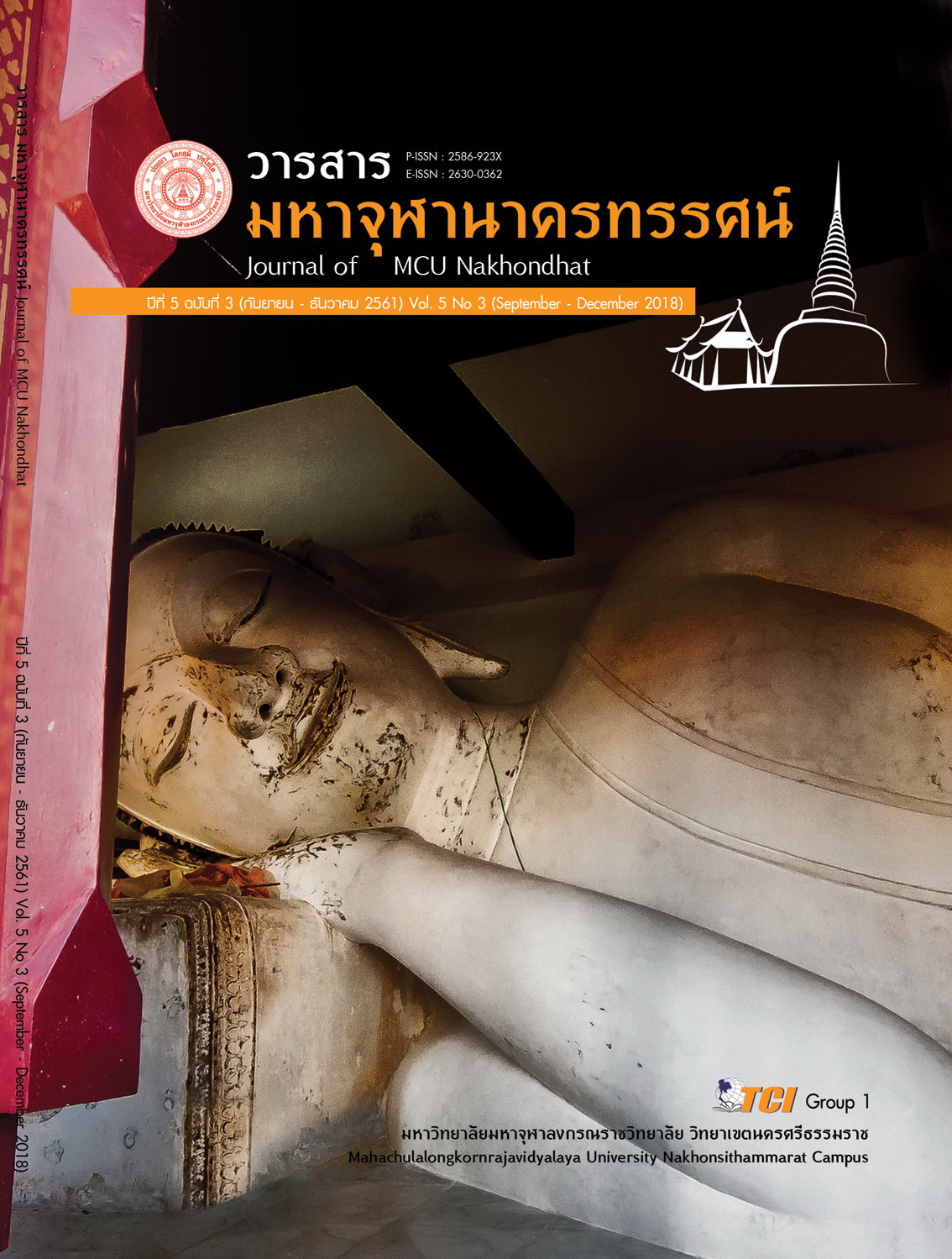SACRED AMULETS WITH THE REGISTRATION OF INTELLECTUAL PROPERTY.
Main Article Content
Abstract
Sacred object of amulet type with the registration of intellectual property from the conceptual and theoretical consideration on the creation and rent the sacred objects. Especially the origin of sacred objects in order to understand the problems in the creation and registration of intellectual property on the sacred objects better, before analyzing legal issues, it is the scope of copyright protection, and the issue of copyright or the owner of a copyrighted work. Including the dispute with the registration of intellectual property of the sacred object of amulet type, lead to the results of the analysis from consideration of the sacred amulets with the registration of intellectual property that able to register the intellectual property, If the person who wishes to register the intellectual property is the creator of the sacred object of amulet type on models or prints it by himself. The reason is that the protection under copyright law is in the form of information, models or prints to the Department of Intellectual Property only. But the Department of Intellectual Property does not check the work that informs that the abomination of the sacred object of amulet type of the work of any person, or the informer who owns the copyright sacred amulet in the piece of fact. Therefore, to inform the copyright information to the Department of Intellectual Property will benefit and register the intellectual property only if the person who wishes to register the intellectual property is the real creator of the work himself
Article Details
References
ณัฐวุฒิ แก้ววิมล. (2558). ปัจจัยที่มีอิทธิพลต่อพฤติกรรมการตัดสินใจเช่าพระเครื่องออนไลน์ เว็บไซต์ G-pra. กรุงเทพมหานคร: เศรษฐศาสตร์มหาบัณฑิต คณะเศรษฐศาสตร์ มหาวิทยาลัยธรรมศาสตร์.
ดวงธรรม โชนเชิดประทีป. (2513). พระกริ่ง. กรุงเทพมหานคร: ไทยสัมพันธ์.
บุษยเทพย์. (2528). ชีวประวัติ อภินิหาร พระคาถาชินบัญชรของเจ้าพระคุณสมเด็จพระพุฒาจารย์(โต) วัดระฆังฯ. กรุงเทพมหานคร: เจริญผล.
พระเทพเวที(ประยุทธ์ ปยุตฺโต). (2531). พระพุทธศาสนาในอาเซียน. กรุงเทพมหานคร: มหาวิทยาลัยมหาจุฬาลงกรณราชวิทยาลัย.
พระบาทสมเด็จพระจุลจอมเกล้าเจ้าอยู่หัว. (2505). พระราชปรารภเรื่องพระพุทธชินราช. จดหมายเหตุกรุงสยาม, หน้า 48-50.
พระมหามนตรี วลฺลโภ(ป้อมสุข). (2542). อิทธิพลของวัตถุมงคล ที่มีต่อสังคมไทยในปัจจุบัน. พระนครศรีอยุทธยา: วิทยานิพนธ์ปริญญามหาบัณฑิต มหาวิทยาลัยมหาจุฬาลงกรณราชวิทยาลัย.
พินิจ สุริยาบุตร. (2537). พระกริ่งปวเรศฯ คเณศ์พระเครื่อง. พระเครื่อง, 21-26.
ยิ่งเทพ จันทรังษี. (2538). มาตรการทางกฏหมายเกี่ยวกับ การจัดสร้าง การโฆษณา และการเก็บรักษา วัตถุมงคลในพระพุทธศาสนา. กรุงเทพมหานคร: วิทยานิพนธ์ปริญญามหาบัณฑิต, ภาควิชานิติศาสตร์, คณะนิติศาสตร์, จุฬาลงกรณ์มหาวิทยาลัย.
ราชกิจจานุเบกษา. (2537). ใน พระราชบัญญัติลิขสิทธิ์ พ.ศ.2537 วันที่ 21 ธันวาคม พ.ศ.2537 เล่ม 11 ตอนที่ 59 ก (หน้า 286-288). กรุงเทพมหานคร: คณะรัฐมนตรีและราชกิจจานุเบกษา.
ลิขสิทธิ์ องค์จตุคามรามเทพยอดเสาหลักเมือง ผ้ายันต์พระโพธิสัตว์พังพระกาฬและผ้ายันต์สุริยันจันทรา, อ.979/2547 (ศาลทรัพย์สินทางปัญญาและการค้าระหว่างประเทศกลาง 29 พฤษภาคม 2547).
ศรีศักร วัลลิโภดม. (2527). พระเครื่องในเมืองสยาม(พิมพ์ครั้งที่2). กรุงเทพมหานคร: มติชน.
ศศิวิมล สิทธิโชค. (2557). ปัญหาในการควบคุมการจัดสร้างและการเช่าบูชาวัตถุมงคล ตามกฎหมายที่เกี่ยวกับพุทธศาสนาของประเทศไทย. กรุงเทพมหานคร: วิทยานิพนธ์นิติศาสตร์มหาบัณฑิต คณะนิติศาสตร์ปรีดี พนมยงค์ มหาวิทยาลัยธุรกิจบัณฑิต.
ศาลอาญา. (12 กรกฎาคม 2561). เข้าถึงได้จาก ศาลอาญา: https://www.crimc.coj.go.th/
สรพล โศภิตกุล. (2544). อาณาจักรเครื่องรางของขลัง:วิถีแห่งความเชื่อของชาวสยาม. เซียนพระ, 16.
เสถียร พันธรังสี. (2521). ศาสนาโบราณ. กรุงเทมมหานคร: มหาจุฬาลงกรณ์ราชวิทยาลัย.
แสง จันทร์งาม. (2534). ศาสนศาสตร์(พิมพ์ครั้งที่ 2). กรุงเทพมหานคร: ไทยวัฒนาพาณิชย์.


